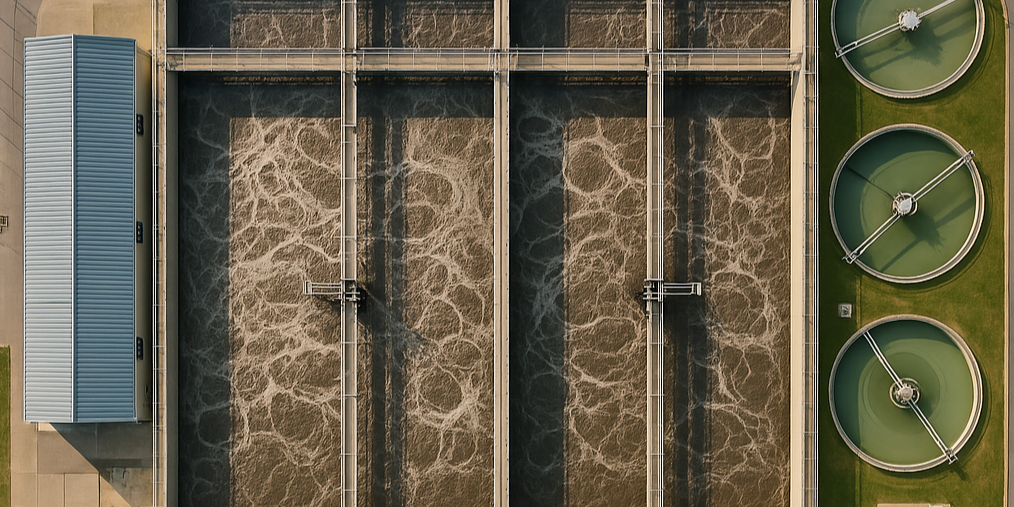Understanding the Working Principle of Dissolved Air Flotation (DAF)
A Dissolved Air Flotation (DAF) system is a water treatment process that clarifies wastewater by removing suspended solids, oils, and other contaminants. It works on the principle of introducing air into the water, creating bubbles that attach to the suspended particles, causing them to float to the surface for removal. This method is particularly effective for treating wastewater from industrial processes, including food and beverage production, oil refineries, and paper mills.

Basic Working Principle
The fundamental principle of a DAF system involves the injection of air into the wastewater under pressure. When the pressure is released, the air forms tiny bubbles that adhere to the suspended particles. These air-particle aggregates, being less dense than water, float to the surface, where they form a scum layer that can be mechanically skimmed off.
Components of a DAF System
A typical DAF system comprises several key components:
1. Influent Feed Tank:
– The wastewater enters the system through the influent feed tank, where initial mixing with treatment chemicals (such as coagulants and flocculants) occurs.
2. Pressure Vessel:
– The water is then pressurized and mixed with air in a pressure vessel. This step is crucial for saturating the water with dissolved air.
3. Flotation Tank:
– The pressurized mixture is released into the flotation tank, where the air forms bubbles as the pressure drops to atmospheric levels. These bubbles attach to the suspended particles.
4. Skimmer:
– A mechanical skimmer removes the floated scum layer from the surface of the flotation tank.
5. Effluent Discharge:
– The clarified water, now free from most suspended solids, exits the system through an effluent discharge pipe.
Process Details
1. Pre-treatment:
– Before entering the DAF unit, the wastewater often undergoes pre-treatment to remove large debris and adjust the pH. Coagulants and flocculants may be added to enhance particle aggregation.
2. Air Saturation:
– In the pressure vessel, the water is mixed with air at a pressure higher than atmospheric pressure. This allows the water to become saturated with dissolved air.
3. Release and Flotation:
– The saturated water is then released into the flotation tank, where the pressure drop causes the dissolved air to come out of solution and form microbubbles. These bubbles adhere to the particles, reducing their density and causing them to rise to the surface.
4. Skimming:
– The floating layer of scum, which contains the bulk of the contaminants, is skimmed off by a mechanical skimmer. This scum is usually collected and disposed of or further treated.
5. Clarified Effluent:
– The clarified water, which is now significantly cleaner, is discharged from the bottom of the flotation tank for further treatment or release into the environment.
Applications
DAF systems are widely used in various industries due to their effectiveness in removing fine suspended solids and oils. Some common applications include:
– Municipal Wastewater Treatment:
– DAF units are used to treat sewage and other municipal wastewater to remove suspended solids and reduce biochemical oxygen demand (BOD).
– Industrial Wastewater Treatment:
– Industries such as food processing, petrochemicals, and pulp and paper use DAF systems to treat their wastewater, removing oils, greases, and other contaminants.
– Drinking Water Treatment:
– In some cases, DAF systems are used in the treatment of drinking water to remove algae and other particulate matter.
Advantages
– Efficiency:
– DAF systems are highly efficient in removing low-density contaminants and fine particles that are difficult to remove using other methods.
– Compact Design:
– They require less space compared to other treatment methods, making them suitable for facilities with limited space.
– Versatility:
– DAF systems can handle a wide range of water and wastewater types, making them versatile for various applications.
Conclusion
The Dissolved Air Flotation (DAF) system is a robust and efficient method for treating wastewater and clarifying water. Its ability to remove fine suspended particles, oils, and greases makes it indispensable in both municipal and industrial applications. By understanding the working principles and components of a DAF system, industries can effectively manage their wastewater treatment processes, ensuring compliance with environmental regulations and contributing to the protection of water resources.




